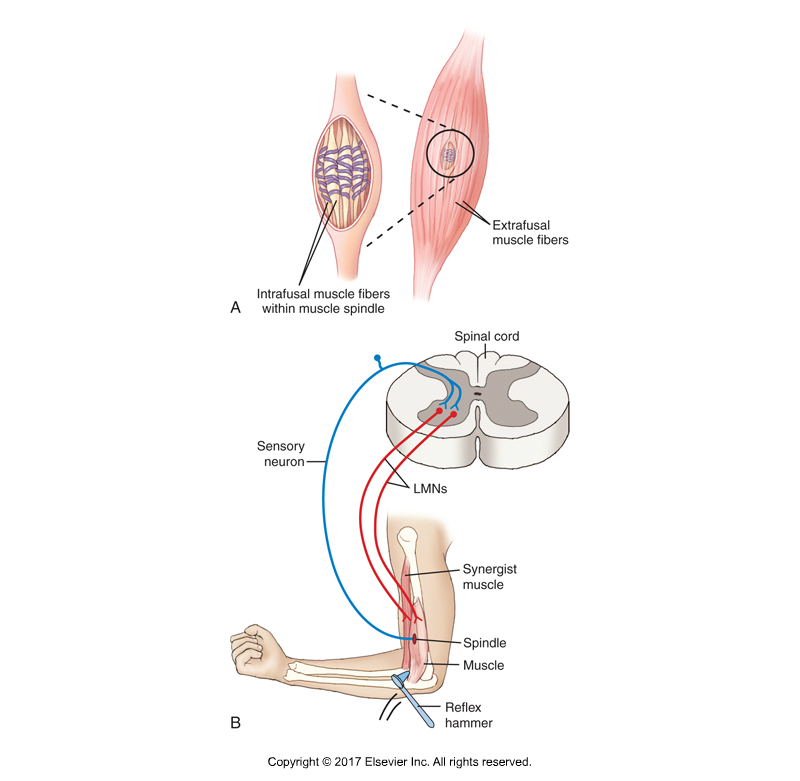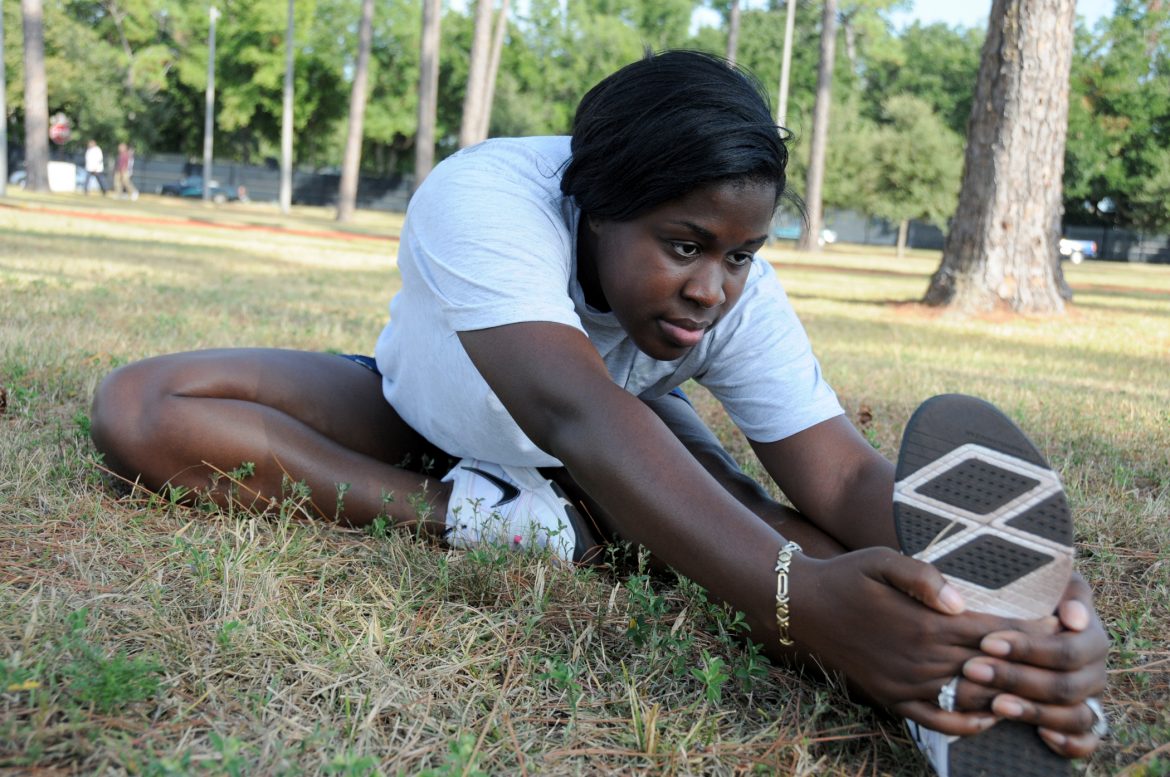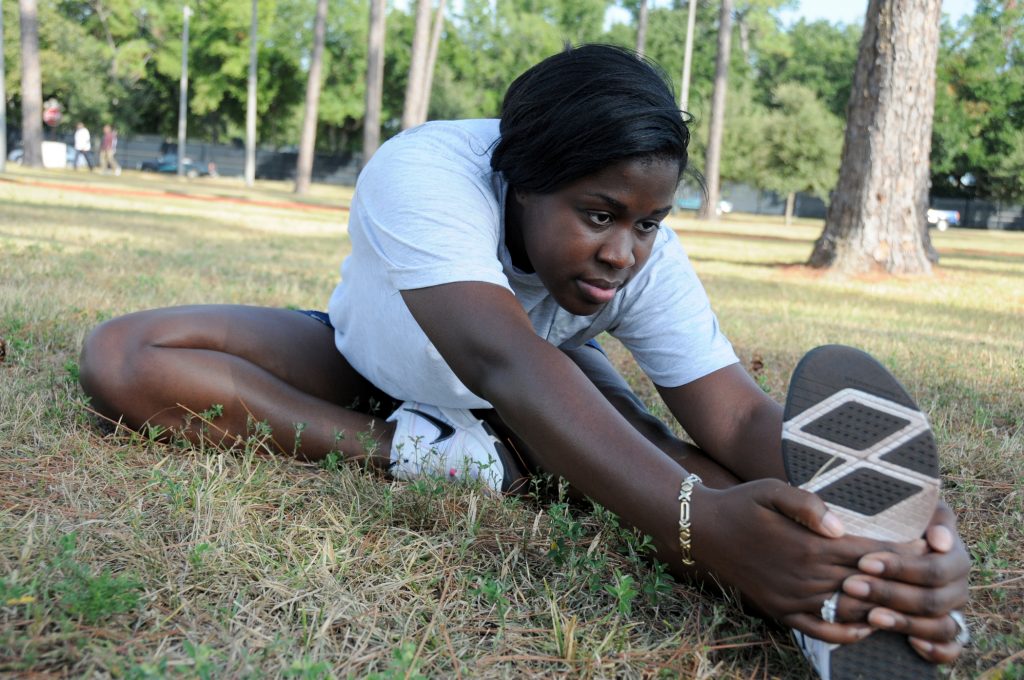Non-Local Effects of Stretching
Non-local effects of muscle stretching have been well documented. For example, unilateral hamstring stretching can cause increased flexibility of the contralateral hamstrings. In addition, stretching of the lower body (hip joint) can cause increased flexibility of the upper body musculature (shoulder joint) and vice versa. The increase in range of motion (ROM) flexibility is usually attributed to the neural effect, because the increased non-local ROM cannot be attributed to mechanical changes in the tissue (increased myofascial compliance or viscoelastic tissue changes).
Research Study – Neural Effects
A study from Japan published in Plos One examined the effects of muscle stretching on the monosynaptic spinal cord muscle spindle (stretch/myotatic) reflex in non-stretched muscles. (Note: The monosynaptic muscle spindle reflex is a two-neuron reflex arc that involves transmission of information from a sensory neuron directly to a motor neuron across a single synapse in the spinal cord.) Given that the muscle spindle stretch reflex increases muscle contraction, then inhibition of this reflex would allow for greater muscle relaxation and therefore the potential for greater flexibility.

Muscle Spindle Reflex. Stretching can inhibit the muscle spindle reflex in local and non-local muscles. Permission Joseph E. Muscolino. Kinesiology – The Skeletal System and Muscle Function, 3ed. (Elsevier, 2017).
Ten healthy males were recruited. The study designed an instrument that induced muscle stretching in the right triceps surae musculature (soleus and medial head of gastrocnemius) with subjects in the supine position. Muscle stretching of the right triceps surae musculature was performed using a motor torque device for 1 minute. Three different dorsiflexion torque forces (at approximately 5, 10, and 15 Nm) were applied to stretch the musculature. The spinal cord stretch reflexes were measured in the lower-limb muscles before, during, and at 0 and 5 minutes following the muscle stretching.
Results
Stretched muscles of the ipsilateral (right) leg
Muscle spindle stretch reflex excitability in stretched muscles (i.e., soleus, medial gastrocnemius) was strongly suppressed by stretching the triceps surae muscles immediately and 5 minutes after stretching. One of the possible explanations for this inhibition is that afferent input induced by muscle stretching inhibits spinal reflex responses (perhaps by descending gamma motor tone). The degree of the spinal reflex suppression depended on the intensity of the stretch.

Permission Joseph E. Muscolino. www.learnmuscles.com
Non-stretched muscles of the ipsilateral (right) leg
Muscle stretching also inhibited a non-stretched antagonist muscle (tibialis anterior) in the same-side leg. Suppression of the response in this muscle might result from the reciprocal inhibition reflex evoked by Ia afferents from the stretched muscles via Ia interneurons. The suppression of spinal reflex excitability during muscle stretching was also observed in ipsilateral musculature proximal to the region of stretch (specifically, biceps femoris of the hamstring group).
Contralateral (left) leg muscles
Reduction in the amplitude of the muscle spindle stretch reflex with dorsiflexion stretching was not seen in the left (contralateral) leg muscles. Therefore, no cross-over effect was seen in this study. The authors attributed this to the fact that the stretching in this study only involved a single ankle joint movement and the degree of muscle stretching used in this study was insufficient. Therefore, it is reasonable to consider that the amount and intensity of afferents generated by muscle stretching in this study was not sufficient to observe crossed-over effects. Further study needs to be done to see if contralateral spinal cord reflex inhibition can be attained with either stretching performed to multiple joints and/or a greater stretching intensity.
Conclusion
The authors concluded that that muscle stretching has inhibitory effects on spinal cord stretch reflexes, not only in stretched muscles, but also in non-local non-stretched muscles of the ipsilateral leg.
Clinical Applications
If the client/patient presents with musculature that is hypertonic but cannot be directly stretched, perhaps because it has sustained an acute muscle strain or other injury, stretching the nearby musculature will cause some neural inhibition and therefore relaxation and hopefully increased flexibility of the target musculature. Therefore, working non-locally may be done until the target musculature can be directly worked. Another clinical application is working with patients with neurological disorders such as stroke or spinal cord injury. The abnormal spastic muscle tone is often present due to hyperexcitability of the spinal reflex pathway. Stretching of a single muscle may relieve these symptoms in multiple muscles.
This blog post article was created in collaboration with www.TerraRosa.com.au.
(Click here for the blog post article: Massage Therapy Promotes Muscle Growth Even on Opposite Leg.)



